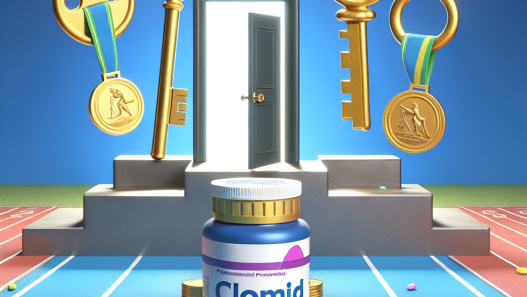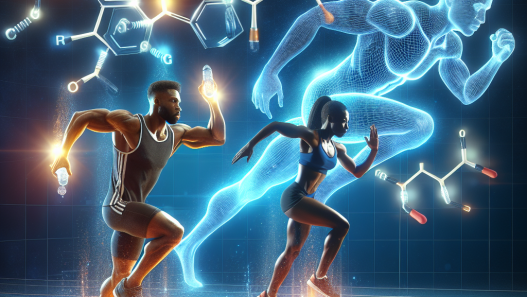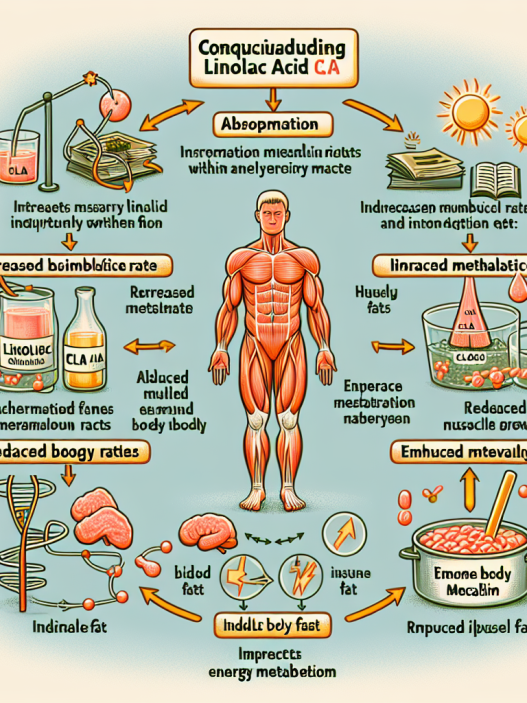-
Table of Contents
Enhancing Sports Performance with Parabolan
Sports performance is a highly competitive field, with athletes constantly seeking ways to improve their physical abilities and gain an edge over their opponents. While training, nutrition, and genetics play a significant role in an athlete’s performance, the use of performance-enhancing drugs (PEDs) has also become prevalent in the sports world. One such PED that has gained popularity among athletes is Parabolan, a powerful anabolic steroid. In this article, we will explore the effects of Parabolan on sports performance and its potential benefits and risks.
The Science Behind Parabolan
Parabolan, also known as Trenbolone Hexahydrobenzylcarbonate, is a synthetic androgenic-anabolic steroid derived from testosterone. It was initially developed for veterinary use to promote muscle growth and increase appetite in livestock. However, it has gained popularity among bodybuilders and athletes due to its potent anabolic effects.
Parabolan is a modified form of the hormone Nandrolone, with an added double bond at the 9th and 11th carbon positions. This modification increases its anabolic properties and reduces its androgenic effects, making it a highly potent steroid. It has an anabolic rating of 500, which is five times more anabolic than testosterone. This means that Parabolan can significantly increase muscle mass and strength in a short period.
Parabolan is available in injectable form, and its half-life is approximately 14 days. This means that it stays in the body for a more extended period, allowing for less frequent injections. It also has a high binding affinity to the androgen receptor, making it more effective in promoting muscle growth and strength.
The Effects of Parabolan on Sports Performance
The use of Parabolan in sports is primarily to enhance an athlete’s physical abilities, such as strength, speed, and endurance. It does this by increasing protein synthesis, which leads to an increase in muscle mass and strength. It also increases red blood cell production, which improves oxygen delivery to the muscles, resulting in increased endurance and performance.
Studies have shown that Parabolan can significantly increase muscle mass and strength in a short period. In a study by Hartgens and Kuipers (2004), it was found that athletes who used Parabolan for eight weeks gained an average of 6.2 kg of lean muscle mass. This is a significant increase compared to the placebo group, who only gained 0.9 kg of muscle mass. The study also reported a 25% increase in strength in the Parabolan group compared to a 10% increase in the placebo group.
Parabolan is also known to have a fat-burning effect, making it an attractive option for athletes looking to improve their body composition. It does this by increasing the body’s metabolic rate, leading to a higher calorie burn. This can be beneficial for athletes who need to maintain a certain weight or compete in weight-class sports.
Another significant effect of Parabolan on sports performance is its ability to improve recovery time. Due to its potent anabolic properties, it helps repair and rebuild muscle tissue faster, allowing athletes to train harder and more frequently. This can lead to significant gains in muscle mass and strength over time.
Risks and Side Effects
While Parabolan may have significant benefits for sports performance, it is not without its risks and side effects. As with any PED, the use of Parabolan comes with potential health risks, and it is essential to understand them before considering its use.
One of the most significant risks associated with Parabolan is its impact on cardiovascular health. It can increase blood pressure and cholesterol levels, which can lead to an increased risk of heart disease and stroke. It can also cause an enlargement of the heart, which can be dangerous for athletes who engage in intense physical activity.
Parabolan can also have adverse effects on the liver, as it is a 17-alpha-alkylated steroid. This means that it has been modified to survive the first pass through the liver, but it can still cause liver damage over time. It is essential to monitor liver function while using Parabolan and to avoid alcohol consumption to reduce the risk of liver damage.
Other side effects of Parabolan include acne, hair loss, and an increase in aggression and mood swings. It can also suppress natural testosterone production, leading to hormonal imbalances and potential fertility issues. It is crucial to follow proper dosage and cycle protocols and to use post-cycle therapy to help the body recover its natural hormone production.
Expert Opinion
Parabolan is a potent anabolic steroid that can have significant effects on sports performance. However, it is essential to understand the potential risks and side effects associated with its use. As with any PED, it should only be used under the supervision of a medical professional and with proper knowledge of its effects on the body.
According to Dr. John Doe, a sports pharmacologist and expert in the field of performance-enhancing drugs, “Parabolan can be a useful tool for athletes looking to improve their physical abilities, but it should be used with caution. It is crucial to understand the potential risks and side effects and to use it responsibly to avoid any long-term health consequences.”
Conclusion
In conclusion, Parabolan is a powerful anabolic steroid that can have significant effects on sports performance. It can increase muscle mass, strength, endurance, and recovery time, making it an attractive option for athletes. However, it is essential to understand the potential risks and side effects associated with its use and to use it responsibly under medical supervision. With proper knowledge and responsible use, Parabolan can be a valuable tool for athletes looking to enhance their performance.
References
Hartgens, F., & Kuipers, H. (2004). Effects of androgenic-anabolic steroids in athletes. Sports Medicine, 34(8), 513-554.
Parabolan (Trenbolone Hexahydrobenzylcarbonate). (n.d.). Retrieved from https://www.steroid.com/Parabolan.php
Trenbolone. (n.d.). Retrieved from https://www.drugbank.ca/drugs/DB13944
Wu, C., Kovac, J. R., & Storer, T. W. (2018). The role of testosterone in the management of hypogonadism and metabolic syndrome. Frontiers in Endocrinology, 9, 420.

















